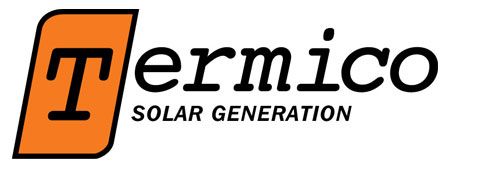Termite Control Perth
Of all the pests we will likely encounter, this one has the most significant capacity to damage our homes!
This risk makes termite barriers and treatments essential to home maintenance.
Termico Pest Management works with several major building companies across Perth to ensure that all new homes are protected against termites, as outlined in the Building Code of Australia. However, these barriers have a life span and require replenishing.
It is important to know when your home was last treated and when a retreatment will be required.
Over 153,000 Western Australians have chosen Termico Pest Management to protect their homes against termites. We are Perth's leading installer of termite preventative systems.
All our pest control technicians are highly trained, licensed, and experienced in termite prevention, detection, and eradication.
Various treatment options are available to protect your home from termites, as outlined in our Termite Treatment section below.
To help you make the right choice for your home and learn more about the options available, our Pest Control Consultants can provide you with a no-obligation FREE quote tailored to your home.
Book a termite treatment and inspection with a trustworthy company—Call Perth's experts in termite control today.
We'll take your call, book you in and turn up on time - 9443 9451
Termite Pest Control
While termites are harmless to our health, they can be highly destructive pests to homes and other timber structures.
Termites cause more damage to properties than floods, fires, and storms combined. They are inconspicuous but voracious feeders, and homes can be destroyed within months of ingress.
It's important to know that most home insurance policies do not cover you for damage caused by termites. Pest control is part of your home's maintenance; therefore, it's the homeowner's responsibility to keep up to date with regular treatments and inspections. Failure to do so leaves your home at risk of damage from termites and other pests.
Termite Control Measures
The Australian Building Code ensures that all newly built homes are initially protected from termites with chemical or physical termite barriers.
Ongoing protection relies on maintaining those barriers, renewing barriers over time, and continuing vigilance (termite inspections) to discover termite activity before significant damage occurs.
Homeowners should:
- Avoid removal of treated soil from the perimeter of the house.
- Avoid covering treated soil with untreated soil around the perimeter of the house.
- Keep all untreated timber off the ground.
- Repair any leaking storm water, hot water, or air conditioning systems causing water to gather against the building.
If you'd like to find more hints and tips on protecting your home against termites, please visit the link below:
Termite Treatments
Recommendations for termite treatments will depend upon various factors, including the type of building construction, routes of potential or actual termite ingress, accessibility, and the homeowner's financial considerations.
Complete Timber Pest Inspections should accompany all treatment methods to accurately appraise these factors and determine the property's current and ongoing risk status.
Chemical Termite Treatments
Localised treatments can be used to halt termite activity and deter further ingress to the treated area, but they won't prevent termites from finding an alternative route through untreated areas.
Full Perimeter Treatments offer the best protection from termite ingress, providing a continuous barrier around the whole building.
Two types of chemicals can be used:
- Repellent chemicals
Termites easily detect and strongly avoid these, providing good protection for treated areas. If access prevents some areas from being treated, or if treated areas are later compromised, termites can recognise the gaps and gain ingress through them.
Bifenthrin is the most commonly used repellent, with a residual life of up to 5 years.
- Non Repellent chemicals
Termites do not detect these. If they don't avoid the chemical, they will pass through it and die from contact with it. Individual termites exposed to the chemical will also pass it on to other members of the colony, causing a compounding effect.
As termites don't detect non repellents, they don't recognise any difference between treated and untreated areas, so ingress through possible gaps is far less likely.
Fipronil is the most commonly used non-repellent, with a residual life of up to 8 years.
Termite Interception and Baiting Systems
Above-ground systems are used to eliminate termites from buildings by placing stations on termite activity to achieve feeding on the bait matrix instead of the timber they have been eating. Worker termites feed other colony members with the bait, and a compounding effect is achieved.
This method can eliminate the entire colony (nest), even when its location is unknown. Monitoring and assessment are maintained so that stations can be added, rebaited, or moved in response to observed termite activity.
In-ground systems are used in a similar way but are installed around properties to provide early detection of termites. They are particularly useful when building designs prevent effective perimeter barriers, as they can intercept termites before the perimeter is breached.
Termite Identification
There are many species, and identifying them at the species level can be difficult. If we take soldier termites as an example, there are two main types of soldiers: mandibulate, with well-developed jaws, and nasute, with heads drawn to a pointed snout.
Coptotermes raffrayi:
- Common in South Western Australia.
- They attack buildings and can cause significant damage.
- Soldiers are 5–6 mm in length.
- Makes small mounds near or on trees and tree stumps.
Nasutitermes exitiosus:
- Occur in most southern areas of Australia
- They attack buildings and can cause significant damage
- Soldiers are 3.6-4.8mm in length
- Builds mounds but also nests in tree stumps or below ground, sometimes under houses
Termite Facts
Termites are classified in the order Blattodea together with cockroaches but belong to a highly specialised sub-order called Isoptera (equal wing). This characteristic is an important feature when distinguishing flying termites from flying ants.
Termites live in large colonies, sometimes with millions of individuals. Some build mounds above the ground; others make their homes below ground or in trees. Many species eat only grass and are not considered pests, while others feed on cellulose obtained from wood. They all fulfill a vital role in nature by returning nutrients to the soil, but the wood-eating species can be extremely destructive pests of our homes and other timber structures.
Colonies are made up of different forms called castes, each of which has specific functions.
King and Queen:
The fertile reproductives of the colony. Queens can live for up to 20 years.
Reproductive's:
The potential future Kings and Queens of colonies yet to be established. Colonising flights occur when conditions are suitable, usually in spring and autumn. Flying termites have four wings of equal size and shape.
Soldiers:
The soldier's primary function is to defend the colony, particularly against ants. Soldiers usually have larger and darker heads than the workers.
Workers:
Workers make up by far the most significant number in the colony. They gather food, build and repair the "mud" workings, and feed all the other castes. It is the workers who do all the damage to our homes.
When termites are forced to the outside of a structure, they build mud shelter tubes made of soil (or other available materials) and their own excretions to protect themselves from light, desiccation, and predators. If the structure is made of wood, they will eat their way through it and can remain undetected.






